Denton, TX Pollen and Allergy Report for Summer 2023
Pollen Allergy Trends in Denton, TX
When is pollen lowest in Denton, TX?

February
Lowest month total PPM
Avg. PPM
When is pollen highest in Denton, TX?

March
Highest month total PPM
Avg. PPM
How does pollen in Denton, TX compare to Texas?
Denton has a higher average PPM than the state of Texas.
Denton yearly avg PPM:
Texas yearly avg PPM:
How does pollen in Denton, TX compare to the USA?
Denton has a higher average PPM than the USA.
Denton yearly avg PPM:
USA yearly avg PPM:
Is pollen worse this year in Denton, TX?
Spring 2023 was worse than spring 2022.
Spring 2023 PPM:
Spring 2022 PPM:
Average PPM in Denton, TX
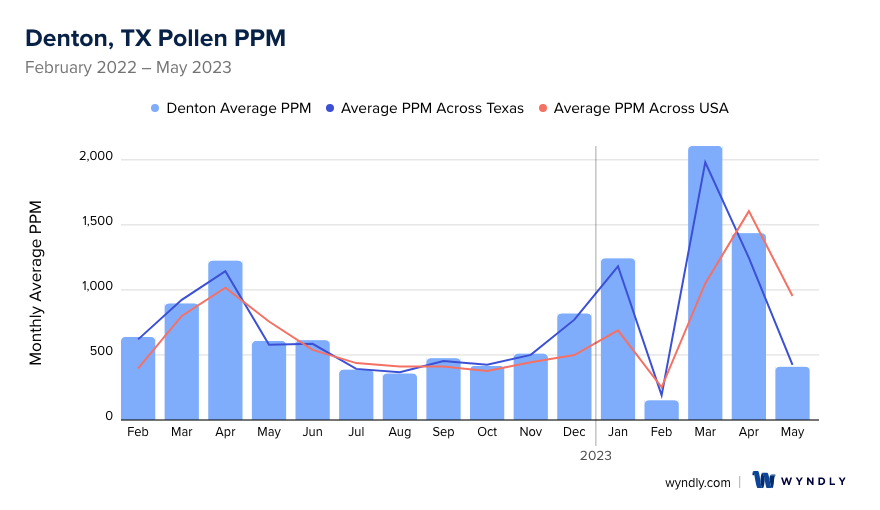
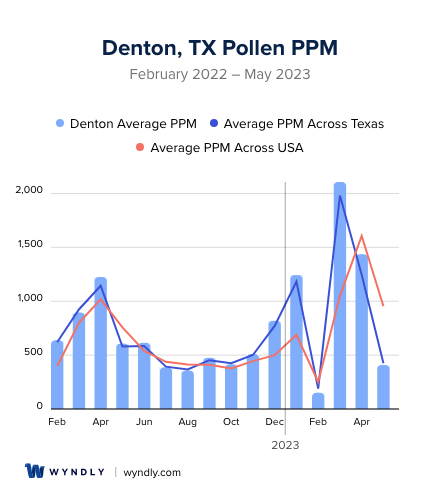
Denton, TX Pollen and Allergy Breakdown by Month
Grass
When is grass pollen highest in Denton, TX?
April has the highest grass pollen in Denton, TX with an average PPM of
When is grass pollen lowest in Denton, TX?
December has the lowest grass pollen in Denton, TX with an average PPM of
Tree
When is tree pollen highest in Denton, TX?
March has the highest tree pollen in Denton, TX with an average PPM of
When is tree pollen lowest in Denton, TX?
July has the lowest tree pollen in Denton, TX with an average PPM of
Weed
When is weed pollen highest in Denton, TX?
December has the highest weed pollen in Denton, TX with an average PPM of
When is weed pollen lowest in Denton, TX?
February has the lowest weed pollen in Denton, TX with an average PPM of
Denton, TX Pollen Monthly Breakdown by Pollen Type
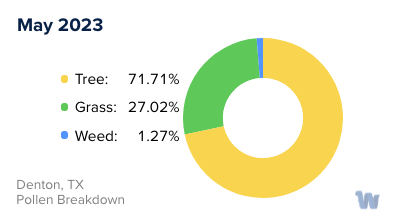
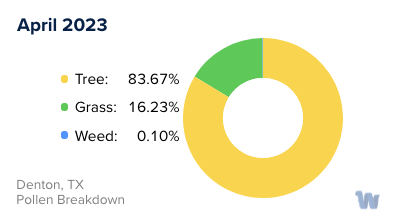
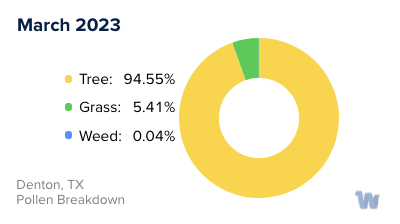
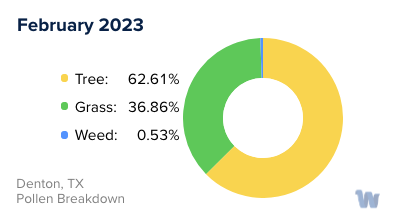
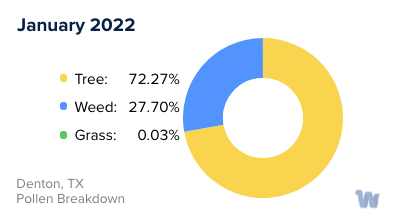
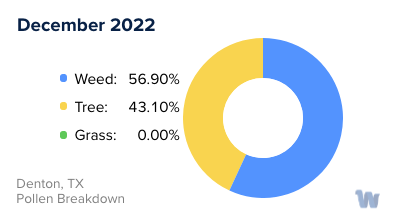
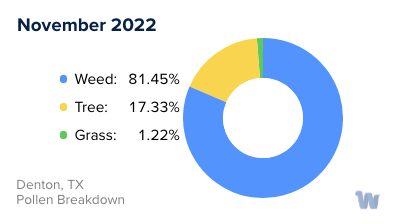
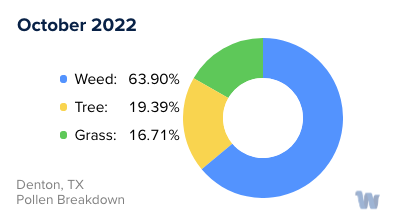
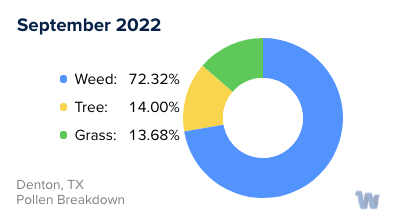
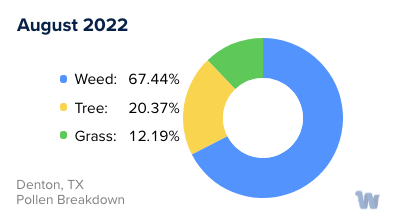
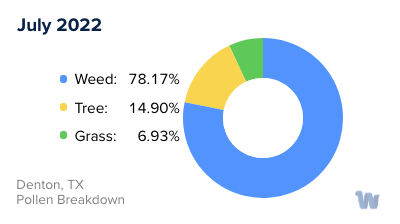
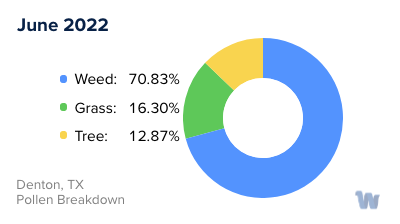
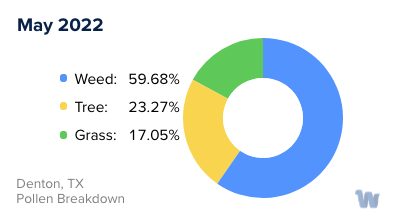
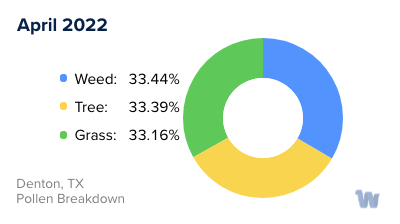
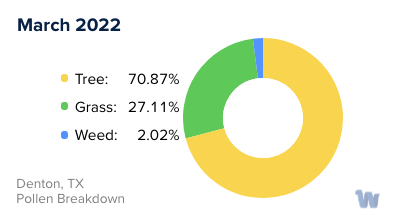
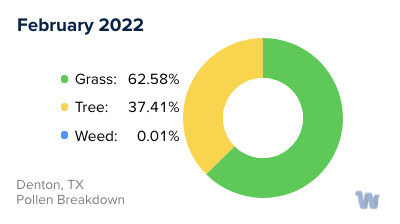
Pollen and Hay Fever in Denton, TX
In the city of Denton, Texas, just like the rest of the state, residents face an ongoing dance with pollen allergies and hay fever throughout the year. In this region, the types of pollen and the timing of their release vary, creating a unique calendar of allergens.
From November to February, the mountain cedar takes center stage. This tree, particularly abundant in Central Texas, releases small, light pollen that can travel hundreds of miles, making it a difficult allergen to avoid. The result? Itchy, watery eyes, and a runny or stuffy nose coupled with bouts of sneezing.
As the mountain cedar season wraps up around January, three new types of pollen enter the scene: elm, ash, and mulberry. These allergens stick around until May, causing symptoms like sneezing, wheezing, and other asthma-like symptoms.
March sees the addition of oak and pecan tree pollen, as well as a variety of grass pollens, including Bermuda, Johnson, and Kentucky bluegrass. Grasses, being plentiful, make this time of year particularly challenging for those sensitive to their pollen. Symptoms extend beyond the typical runny nose and watery eyes to include a sore throat and other asthma-like symptoms.
A brief respite comes in June and July when the blistering heat of the Texas summer reduces pollen production, causing pollen counts to drop. However, this respite is short-lived.
By August, ragweed takes the spotlight. This soft-stemmed, flowering weed thrives in the tropical and subtropical regions of the Americas and is particularly plentiful in the southwestern U.S. The ragweed season, extending until November, brings with it the familiar symptoms of runny noses, sneezing, itchy eyes, and at its worst, asthma flares.
As the ragweed season begins to taper off in November, the mountain cedar starts to bloom again, marking the restart of Denton, Texas's unique allergy season calendar. Thus, the dance with pollen allergies and hay fever continues, as the city's residents navigate their year in tune with the cycles of these allergens.


